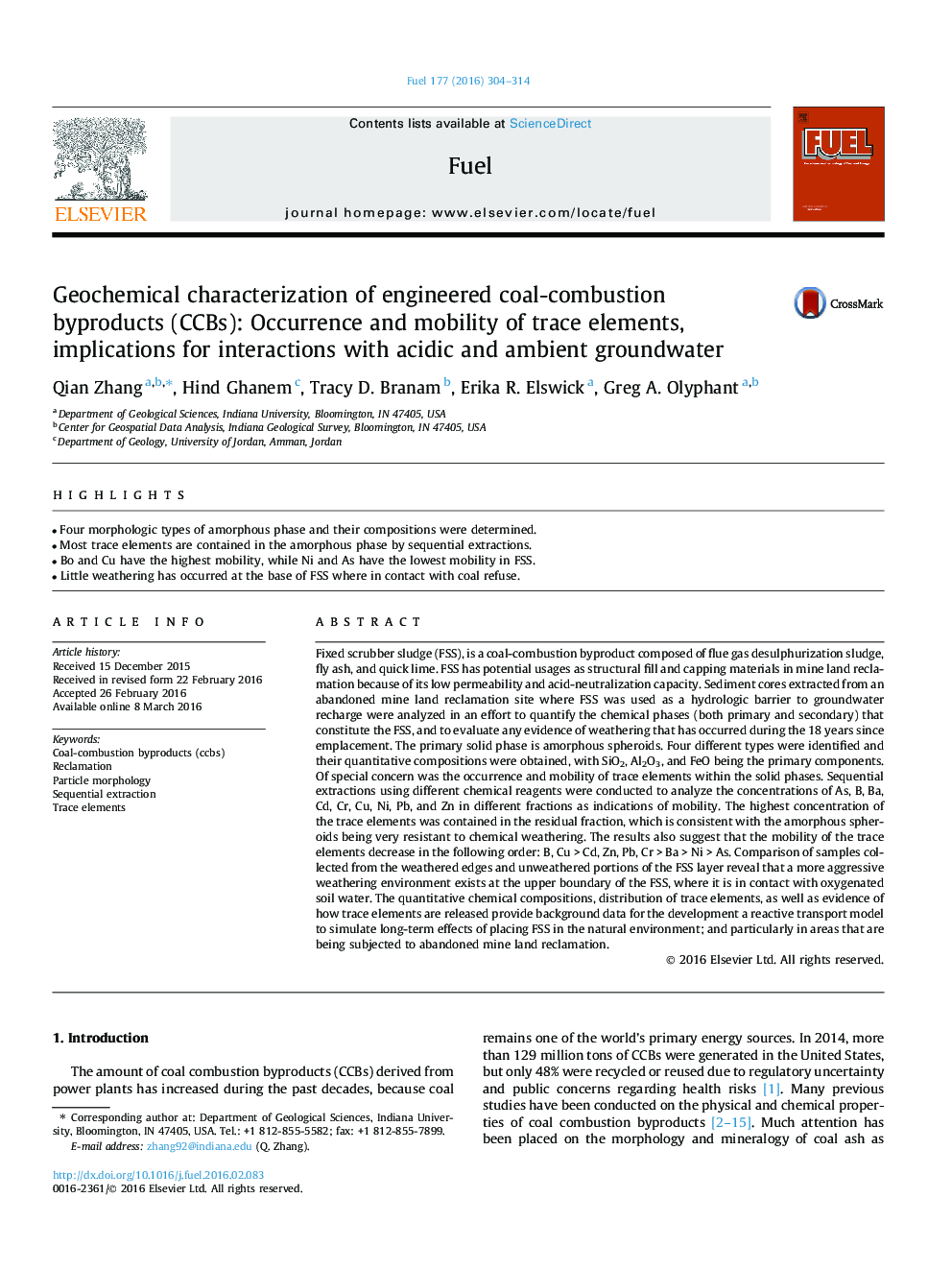| کد مقاله | کد نشریه | سال انتشار | مقاله انگلیسی | نسخه تمام متن |
|---|---|---|---|---|
| 205145 | 461097 | 2016 | 11 صفحه PDF | دانلود رایگان |

• Four morphologic types of amorphous phase and their compositions were determined.
• Most trace elements are contained in the amorphous phase by sequential extractions.
• Bo and Cu have the highest mobility, while Ni and As have the lowest mobility in FSS.
• Little weathering has occurred at the base of FSS where in contact with coal refuse.
Fixed scrubber sludge (FSS), is a coal-combustion byproduct composed of flue gas desulphurization sludge, fly ash, and quick lime. FSS has potential usages as structural fill and capping materials in mine land reclamation because of its low permeability and acid-neutralization capacity. Sediment cores extracted from an abandoned mine land reclamation site where FSS was used as a hydrologic barrier to groundwater recharge were analyzed in an effort to quantify the chemical phases (both primary and secondary) that constitute the FSS, and to evaluate any evidence of weathering that has occurred during the 18 years since emplacement. The primary solid phase is amorphous spheroids. Four different types were identified and their quantitative compositions were obtained, with SiO2, Al2O3, and FeO being the primary components. Of special concern was the occurrence and mobility of trace elements within the solid phases. Sequential extractions using different chemical reagents were conducted to analyze the concentrations of As, B, Ba, Cd, Cr, Cu, Ni, Pb, and Zn in different fractions as indications of mobility. The highest concentration of the trace elements was contained in the residual fraction, which is consistent with the amorphous spheroids being very resistant to chemical weathering. The results also suggest that the mobility of the trace elements decrease in the following order: B, Cu > Cd, Zn, Pb, Cr > Ba > Ni > As. Comparison of samples collected from the weathered edges and unweathered portions of the FSS layer reveal that a more aggressive weathering environment exists at the upper boundary of the FSS, where it is in contact with oxygenated soil water. The quantitative chemical compositions, distribution of trace elements, as well as evidence of how trace elements are released provide background data for the development a reactive transport model to simulate long-term effects of placing FSS in the natural environment; and particularly in areas that are being subjected to abandoned mine land reclamation.
Journal: Fuel - Volume 177, 1 August 2016, Pages 304–314